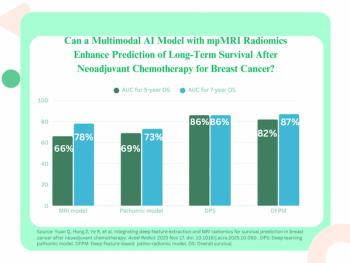
MR perfusion determines degree of coronary stenoses
Quantitative myocardial first-pass perfusion can distinguish coronary artery stenoses with a high degree of specificity and negative predictive value. This noninvasive test offers an alternative to diagnostic catheterization to grade the severity of coronary artery disease, according to a presentation last week at the North American Society of Cardiac Imaging meeting in Amelia Island, FL.
Quantitative myocardial first-pass perfusion can distinguish coronary artery stenoses with a high degree of specificity and negative predictive value. This noninvasive test offers an alternative to diagnostic catheterization to grade the severity of coronary artery disease, according to a presentation last week at the North American Society of Cardiac Imaging meeting in Amelia Island, FL.
Led by Dr. Prasad M. Panse, a resident at the University of Florida at Jacksonville, researchers at various centers studied 41 patients between the ages of 34 and 78 with known CAD. The patients underwent catheter angiography and MR first-pass perfusion, done at rest and maximal hyperemia. Their diseases and risk factors included single- and multivessel disease, diabetes, and hypertension.
"For clinical utility, it's important to look at all comers," said coauthor and presenter Dr. Norbert Wilke, director of cardiac MR and CT at UF Jacksonville.
Quantitative MR analysis was performed to obtain the absolute myocardial perfusion reserve in eight sectors. Coronary angiograms were analyzed independently by an experienced observer, and each epicardial artery was categorized by the degree of stenosis. The perfusion reserve was then compared with the degree of stenosis in each of the sectors.
Severe stenosis was defined as greater than or equal to 75% or collateralized myocardium (Rentrop >1). Rentrop is a system of grading collateral filling where:
- 0 = none
- 1 = filling of side branches of the artery to be dilated via collateral channels without visualization of the epicardial segment
- 2 = partial filling of the epicardial segment via collateral channels
- 3 = complete filling of the epicardial segment of the artery being dilated via collateral channels
The sensitivity, specificity, positive predictive value, and negative predictive value for MR first-pass perfusion imaging to detect severe stenosis as determined visually from coronary angiograms were 67.6%, 90.1%, 56.5%, and 94.5%, respectively, for each sector.
The low sensitivity on a per sector basis was likely the result of microvascular disease, small-vessel disease in diabetic patients, subendocardial ischemia, or other cardiac risk factors, Wilke said. On a per patient basis, sensitivity rose to 92%.
"These pathological findings can be detected with MR first-pass perfusion. Conventional x-ray angiograms, used as a gold standard here, failed to detect these pathologies," he said.
On a per patient basis, 30 patients were correctly diagnosed, 10 obtained false-positive results, and one had false-negative results in comparison with visually graded stenosis by angiography. Collateralized myocardium showed a perfusion reserve comparable to 75% to 90% stenosis.
The cutoff for severe CAD as measured by MR first-pass perfusion reserve was 1.5, a threshold that can discriminate between a positive (less than 1.5) or a negative angiogram.
For more information from the Diagnostic Imaging archives:
Newsletter
Stay at the forefront of radiology with the Diagnostic Imaging newsletter, delivering the latest news, clinical insights, and imaging advancements for today’s radiologists.




























